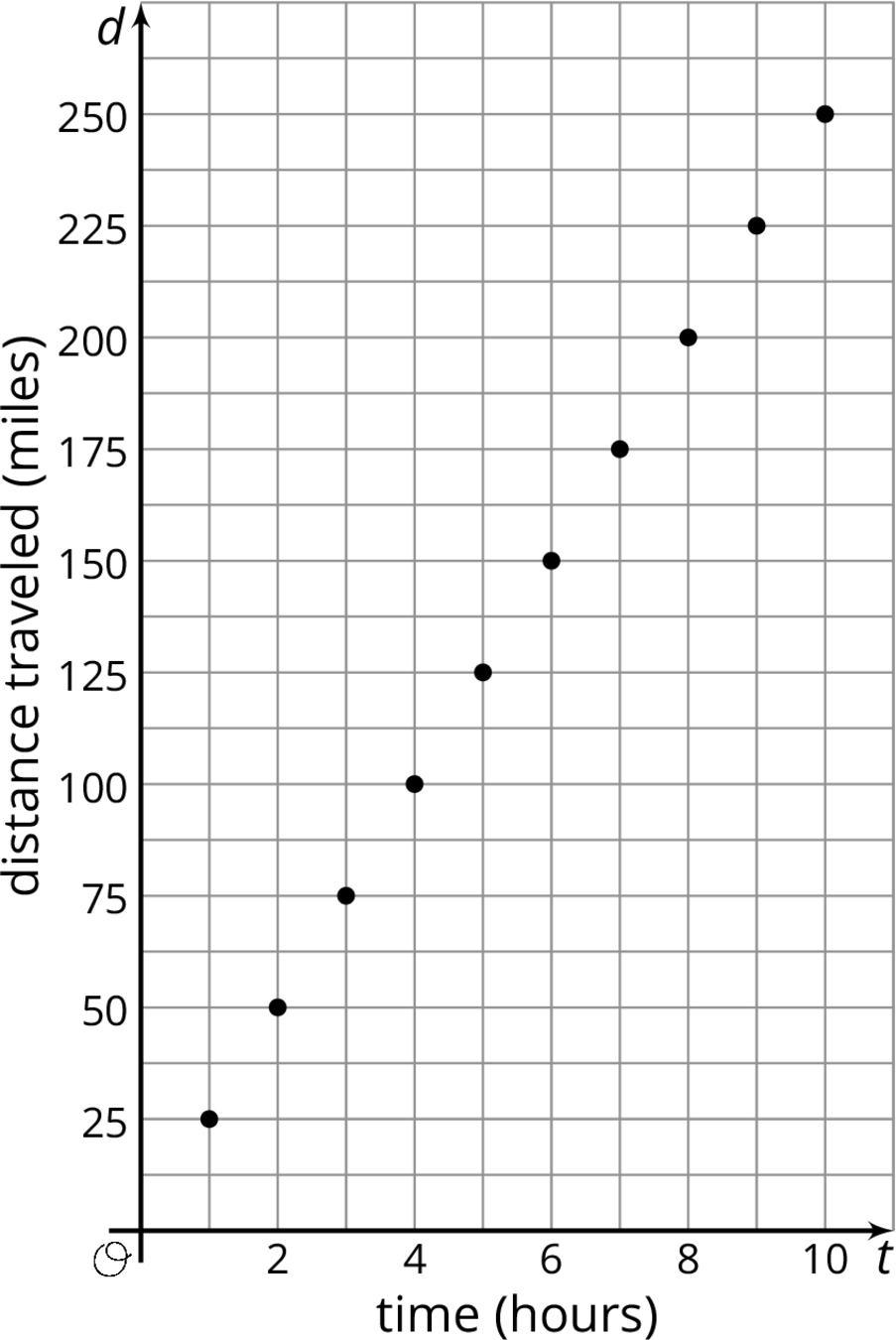Lesson 16
Two Related Quantities, Part 1
Lesson Narrative
This lesson is the first of two that apply new understanding of algebraic expressions and equations to represent relationships between two quantities. Students use and make connections between tables, graphs, and equations that represent these relationships.
In this lesson, students revisit and extend their understanding of equivalent ratios. A familiar scenario of mixing paints in a given ratio provides the context for writing equations that represents the relationship between two quantities. Students then create a table of values that shows how changes in one quantity affect changes in the other, and graph the points from the table in the coordinate plane. They are invited to notice that these points lie on a line. Students will study proportional relationships in more depth in grade 7.
Students learn that relationships between two quantities can be described by two different but related equations with one quantity, the dependent variable, affected by changes in the other quantity, the independent variable. When people engage in mathematical modeling, which variable is considered independent and which is considered dependent is often the choice of the modeler (though sometimes the situation suggests choosing one way over the other). The context in this lesson was intentionally chosen because the context does not suggest a preference about which quantity is chosen as the independent variable.
Learning Goals
Teacher Facing
- Compare and contrast (orally) graphs and equations that represent a relationship between the same quantities but have the independent and dependent variables switched.
- Comprehend the terms “independent variable” and “dependent variable” (in spoken and written language).
- Create a table, graph, and equation to represent the relationship between quantities in a set of equivalent ratios.
Student Facing
Let’s use equations and graphs to describe relationships with ratios.
Learning Targets
Student Facing
- I can create tables and graphs that show the relationship between two amounts in a given ratio.
- I can write an equation with variables that shows the relationship between two amounts in a given ratio.
CCSS Standards
Addressing
Glossary Entries
-
dependent variable
The dependent variable is the result of a calculation.
For example, a boat travels at a constant speed of 25 miles per hour. The equation \(d=25t\) describes the relationship between the boat's distance and time. The dependent variable is the distance traveled, because \(d\) is the result of multiplying 25 by \(t\).

-
independent variable
The independent variable is used to calculate the value of another variable.
For example, a boat travels at a constant speed of 25 miles per hour. The equation \(d=25t\) describes the relationship between the boat's distance and time. The independent variable is time, because \(t\) is multiplied by 25 to get \(d\).

Print Formatted Materials
For access, consult one of our IM Certified Partners.
Additional Resources
| Google Slides | For access, consult one of our IM Certified Partners. |
|
| PowerPoint Slides | For access, consult one of our IM Certified Partners. |